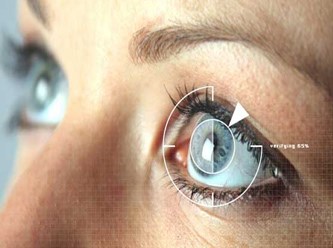 Keratitis:
Keratitis:
Keratitis is an inflammation of the cornea and has multiple types and causes. Early diagnosis is crucial for treatment, as untreated keratitis can lead to vision loss.
Keratoconus:
Keratoconus is a disease characterized by the thinning and bulging of the cornea. It typically starts in adolescence and is often noticed in the 20s. The disease progresses between the ages of 20-40 but usually stabilizes after 40. Keratoconus manifests with the progression of myopia and astigmatism. Early diagnosis is possible with special tests.
Dry Eye Syndrome:
Dry eye syndrome occurs due to a lack of tears, causing a dry feeling in the eyes. Symptoms include stinging, redness, and a sensation of a foreign body in the eye.
Corneal Abrasion and Erosion:
Corneal Abrasion:
Corneal abrasion is a tear in the corneal epithelium, usually caused by trauma (scratching with nails, paper, or branches). This condition leads to symptoms like pain, redness, light sensitivity, and blurry vision. Treatment involves antibiotics, lubricating eye drops, and pain relief.
Corneal Erosion:
Corneal erosion occurs when the epithelium poorly adheres to the underlying tissue. It often develops in areas where previous abrasions have occurred and typically appears in the morning upon waking. Treatment is similar to corneal abrasion, but saline eye drops or ointments may also be used.
Prevention of Corneal Abrasions and Erosions:
Wearing protective eyewear during activities that pose a risk of eye injury, such as working with tools or gardening, can help prevent abrasions. Additionally, proper care of contact lenses is crucial.
Conjunctivitis:
Conjunctivitis is the inflammation of the thin membrane covering the inner part of the eyelids and the white part of the eye. It can be caused by infections (viral and bacterial), allergies, or environmental factors. Symptoms include pain, excessive tearing, itching, and excessive discharge. Treatment may involve antibiotics or other appropriate remedies.
Corneal Examination Methods:
- Biomicroscopy: This method allows for binocular examination of the cornea and other structures of the anterior segment.
- Keratometry: Measures the refractive power of the cornea.
- Topography: Provides a topographic analysis of the anterior surface of the cornea.
- Pachymetry: Measures the thickness of the cornea.
- Specular Microscopy: Shows the number and structure of endothelial cells.
- Esthesiometry: Evaluates corneal sensitivity.
- Corneal Staining: Detects defects on the corneal surface using specific stains like fluorescein or rose bengal.
Corneal Transplant:
A corneal transplant is necessary when the cornea loses its transparency or shape, often due to conditions like keratoconus. Turkey's leading institution, Dünyagöz Hospital, provides advanced technology and expert eye doctors for corneal transplants, performing both simple and complex surgeries.